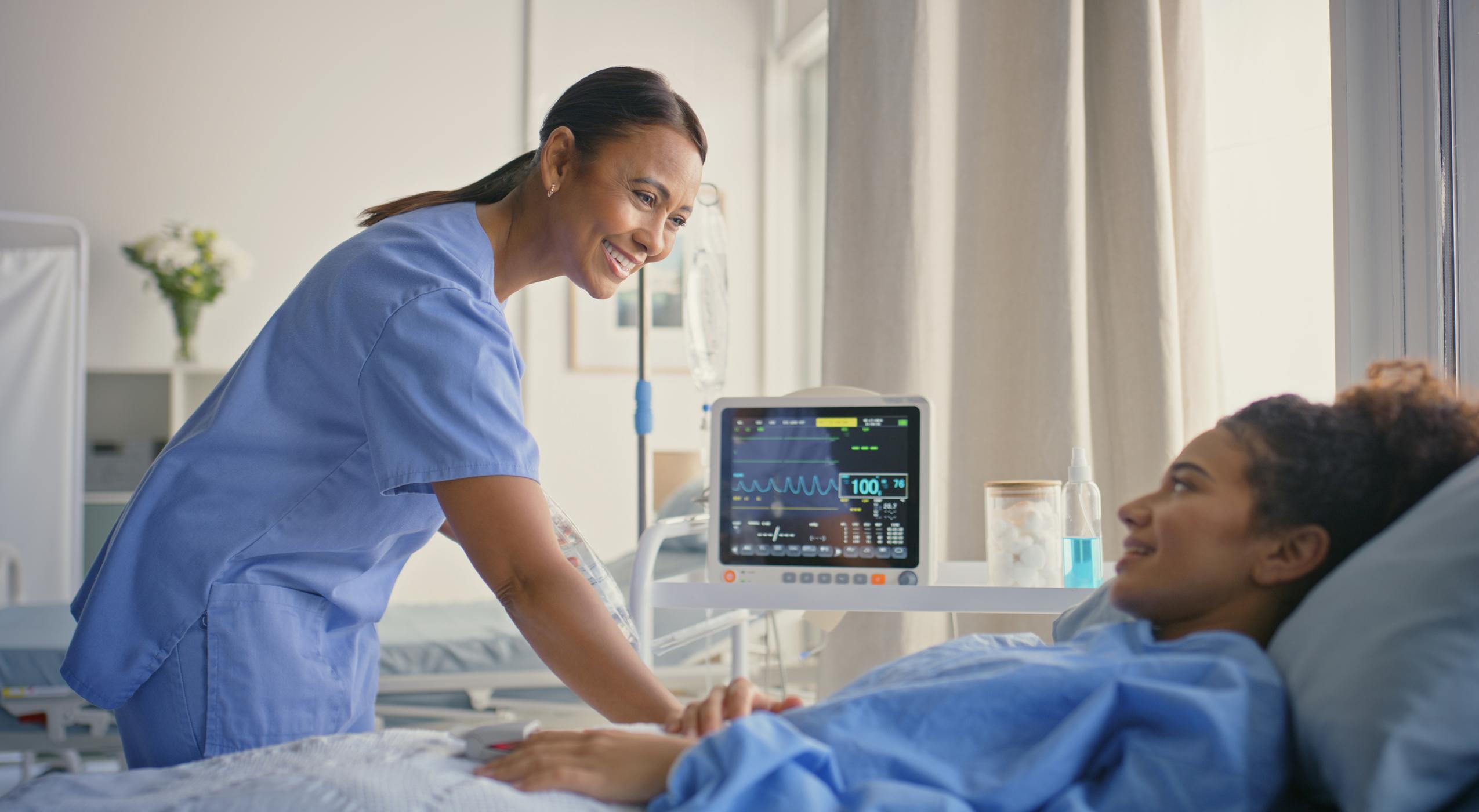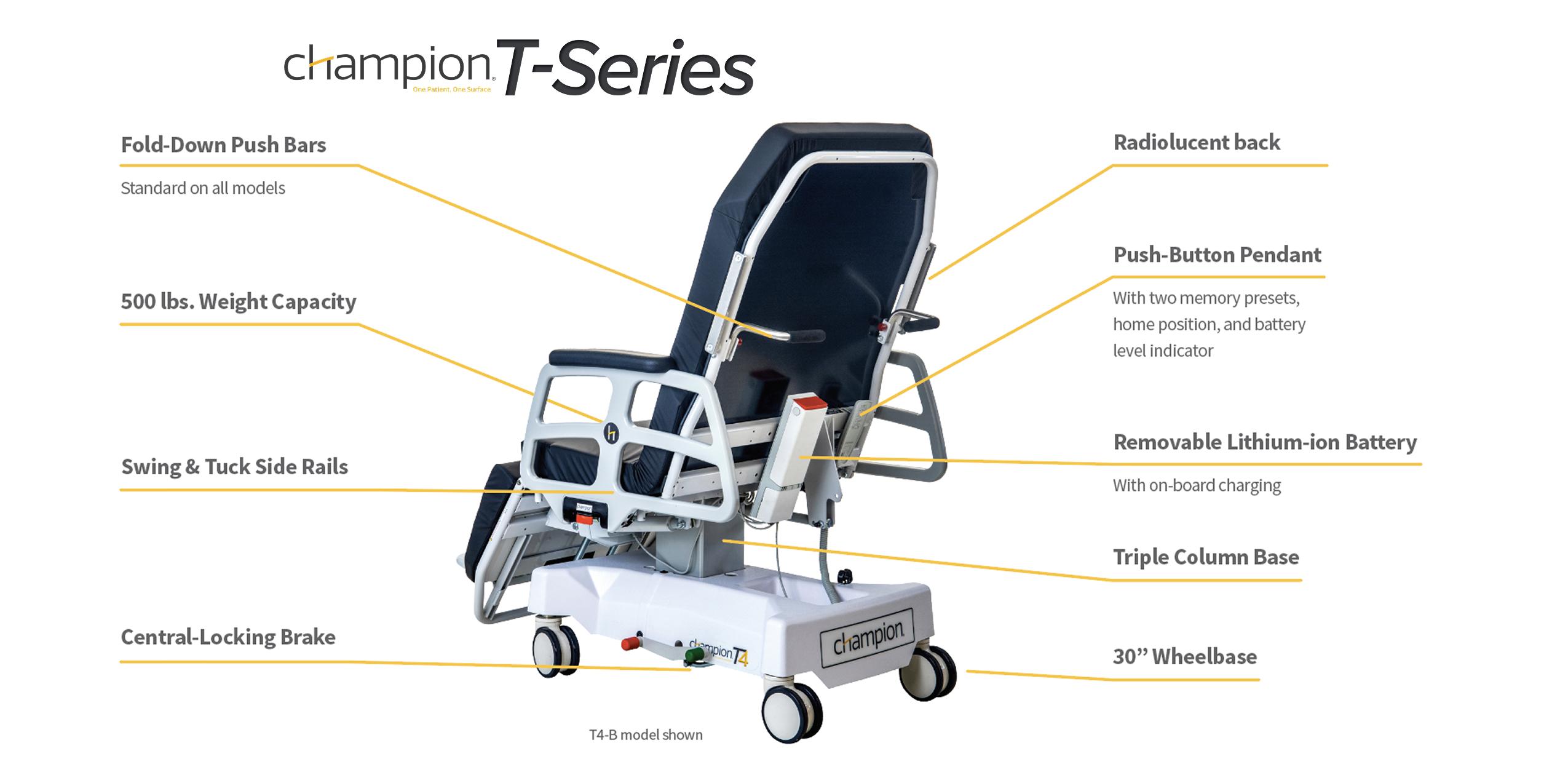
Electronic Health Records (EHRs) are designed to streamline healthcare delivery, but for many nurses, they’ve become more of a burden than a benefit. That’s a critical issue for ambulatory surgery centers (ASCs), where fast-paced environments demand technology that supports—not slows—clinical workflows.
In the surgery center setting, nurses are the backbone of care coordination, documentation, and patient flow. An EHR that’s not intuitive or aligned with how nurses work can create inefficiencies, contribute to burnout, and ultimately compromise patient outcomes. But when an EHR is nurse-friendly, it enhances both staff satisfaction and operational performance.
So, what exactly makes an EHR nurse-friendly—and how can thoughtful equipment choices support those same goals?
How Nurses Use EHRs in Ambulatory Surgery Centers—and Why It Matters
According to a recent Black Book Research national survey, nurses often report that many EHR systems slow them down, introduce redundancy, and distract from patient care. That’s especially problematic in high-volume, high-stakes environments like surgery centers, where timing and efficiency are critical.
Nurses interact with EHRs constantly, from intake through recovery. If the system isn’t designed around their workflow, it adds friction to nearly every step of the care process. Nurse-friendly systems, on the other hand, support real-time documentation, streamline communication, and reduce the cognitive load, allowing nurses to focus on what matters most: safe, effective patient care.
Sign up to get the latest industry news and offers right in your inbox

Top Features to Look for in a Nurse-Friendly EHR for Surgery Centers
So, what sets a nurse-friendly EHR apart from the rest? Based on insights from front-line users, here are a few core features your ASC should look for:
User-Friendly EHR Interfaces Designed for Nurses
Nurses are often multitasking, moving between patients and documenting on the go. An EHR with a clean, intuitive layout helps them find what they need fast. Drop-down menus, logical tabs, and customizable dashboards reduce the time spent hunting for information or switching between screens.
The goal: fewer clicks, fewer errors, and a smoother experience during high-pressure moments.
Procedure-Based Documentation Templates for Faster Workflows
Not all surgeries are the same, and your documentation shouldn’t be either. Nurse-friendly EHRs offer procedure-specific templates that auto-populate relevant fields based on the type of surgery being performed. These smart forms help standardize documentation while keeping it relevant and easy to complete.
For instance, templates for GI procedures might include built-in prompts for sedation monitoring, while orthopedic templates highlight key post-op assessments.
Nurse-Centered Clinical Decision Support Tools
Clinical decision support tools are only useful if they’re tailored to the people actually using them. Nurse-friendly systems offer real-time alerts and reminders that align with nursing priorities—such as overdue vitals, allergy checks, or post-anesthesia scoring—rather than an overwhelming flood of irrelevant pop-ups.
By focusing on what nurses need to know in real-time, the EHR can help reduce oversight and support better clinical decision-making.
Mobile EHR Access and Real-Time Charting at the Point of Care
In fast-paced surgical settings, nurses can’t afford to be tethered to a desktop. Systems that allow mobile access—whether via tablets or workstations on wheels—make it easier to document at the point of care. This not only saves time but also ensures more accurate, real-time documentation.
Bonus: Some systems now offer voice dictation or barcode scanning integration, which further streamlines the process.
Seamless EHR Communication and Interoperability Tools
Nurse-friendly EHRs should support efficient handoffs and coordination. Secure messaging, alerts to care team members, and integrated care plans help eliminate communication gaps that could lead to patient safety issues. When systems “talk” to each other—especially between scheduling, labs, imaging, and recovery—nurses spend less time playing middleman and more time delivering care.
How Nurse-Friendly EHRs Improve Efficiency, Safety, and Staff Retention
Investing in nurse-friendly technology isn’t just about job satisfaction—it’s about operational performance. Here’s why:
- Faster Throughput: With fewer documentation delays, patients move more efficiently from pre-op to PACU to discharge.
- Improved Safety: Real-time alerts and accurate documentation reduce the risk of missed steps or errors.
- Stronger Retention: Burnout is one of the top reasons nurses leave surgery centers. A better tech experience helps keep your best talent.
- Smarter Resource Use: When nurses aren’t bogged down by clunky software, they can flex their clinical skills and support higher acuity care.
Ultimately, when you empower nurses with tools that respect their workflow and support their practice, your entire center benefits, from efficiency metrics to patient satisfaction scores.

Pairing Nurse-Friendly EHRs with Workflow-Enhancing Medical Equipment
Even the best EHR can’t overcome physical inefficiencies in the environment. That’s where thoughtfully designed equipment comes in.
For example, powered chairs that reduce the need for manual patient transfers can help prevent strain and save time. Procedure chairs that integrate seamlessly into the flow of pre-op, intra-op, and recovery eliminate the need for multiple pieces of equipment. These tools act as physical extensions of the workflow improvements that a great EHR promises.
By pairing digital tools with smart clinical furnishings, you create a care environment that’s efficient, safe, and responsive to both patient and staff needs.
Improve Surgical Workflow with the T4 Procedure Chair from Champion
One of the best examples of that integration is Champion’s T4 Procedure Chair.
Designed specifically for surgical, endoscopy, GI, and emergency settings, the T4 supports the One Patient, One Surface® model—minimizing transfers and maximizing safety. With powered positioning, memory presets, and a compact footprint, the T4 helps nurses and surgeons move patients with precision and ease.
Here’s what makes the T4 a smart investment for surgery centers:
- Powered height, back, and leg adjustments allow for quick, ergonomic positioning at every stage of care.
- Space-saving design takes up half the footprint of traditional stretchers—ideal for narrow hallways and tight ORs.
- Built-in lithium-ion battery ensures portability and uninterrupted functionality—no more racing for outlets.
- Triple-column base and Trendelenburg positioning support a wide range of procedures and enhance surgical access.
- “One patient, one surface” design helps reduce the risk of falls and infection by limiting unnecessary transfers.

From pre-op to recovery, the T4 enhances the kind of workflow your EHR was designed to support. And when your equipment and software are aligned, your team works faster, safer, and more effectively.
Learn which T-Series Procedure Chair is best for your clinical application, then request a quote for your facility.
